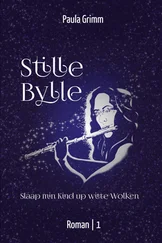Paul Graham - Essays
Здесь есть возможность читать онлайн «Paul Graham - Essays» весь текст электронной книги совершенно бесплатно (целиком полную версию без сокращений). В некоторых случаях можно слушать аудио, скачать через торрент в формате fb2 и присутствует краткое содержание. Жанр: Прочая околокомпьтерная литература, на английском языке. Описание произведения, (предисловие) а так же отзывы посетителей доступны на портале библиотеки ЛибКат.
- Название:Essays
- Автор:
- Жанр:
- Год:неизвестен
- ISBN:нет данных
- Рейтинг книги:4 / 5. Голосов: 1
-
Избранное:Добавить в избранное
- Отзывы:
-
Ваша оценка:
- 80
- 1
- 2
- 3
- 4
- 5
Essays: краткое содержание, описание и аннотация
Предлагаем к чтению аннотацию, описание, краткое содержание или предисловие (зависит от того, что написал сам автор книги «Essays»). Если вы не нашли необходимую информацию о книге — напишите в комментариях, мы постараемся отыскать её.
Essays — читать онлайн бесплатно полную книгу (весь текст) целиком
Ниже представлен текст книги, разбитый по страницам. Система сохранения места последней прочитанной страницы, позволяет с удобством читать онлайн бесплатно книгу «Essays», без необходимости каждый раз заново искать на чём Вы остановились. Поставьте закладку, и сможете в любой момент перейти на страницу, на которой закончили чтение.
Интервал:
Закладка:
How about other languages? In the other languages mentioned in this talk-- Fortran, C, C++, Java, and Visual Basic-- it is not clear whether you can actually solve this problem. Ken Anderson says that the following code is about as close as you can get in Java:
public interface Inttoint { public int call(int i); } public static Inttoint foo(final int n) { return new Inttoint() { int s = n; public int call(int i) { s = s + i; return s; }}; }
This falls short of the spec because it only works for integers. After many email exchanges with Java hackers, I would say that writing a properly polymorphic version that behaves like the preceding examples is somewhere between damned awkward and impossible. If anyone wants to write one I'd be very curious to see it, but I personally have timed out.
It's not literally true that you can't solve this problem in other languages, of course. The fact that all these languages are Turing-equivalent means that, strictly speaking, you can write any program in any of them. So how would you do it? In the limit case, by writing a Lisp interpreter in the less powerful language.
That sounds like a joke, but it happens so often to varying degrees in large programming projects that there is a name for the phenomenon, Greenspun's Tenth Rule:
Any sufficiently complicated C or Fortran program contains an ad hoc informally-specified bug-ridden slow implementation of half of Common Lisp.
If you try to solve a hard problem, the question is not whether you will use a powerful enough language, but whether you will (a) use a powerful language, (b) write a de facto interpreter for one, or (c) yourself become a human compiler for one. We see this already begining to happen in the Python example, where we are in effect simulating the code that a compiler would generate to implement a lexical variable.
This practice is not only common, but institutionalized. For example, in the OO world you hear a good deal about "patterns". I wonder if these patterns are not sometimes evidence of case (c), the human compiler, at work. When I see patterns in my programs, I consider it a sign of trouble. The shape of a program should reflect only the problem it needs to solve. Any other regularity in the code is a sign, to me at least, that I'm using abstractions that aren't powerful enough-- often that I'm generating by hand the expansions of some macro that I need to write.
The IBM 704 CPU was about the size of a refrigerator, but a lot heavier. The CPU weighed 3150 pounds, and the 4K of RAM was in a separate box weighing another 4000 pounds. The Sub-Zero 690, one of the largest household refrigerators, weighs 656 pounds.
Steve Russell also wrote the first (digital) computer game, Spacewar, in 1962.
If you want to trick a pointy-haired boss into letting you write software in Lisp, you could try telling him it's XML.
Here is the accumulator generator in other Lisp dialects: Scheme: (define (foo n) (lambda (i) (set! n (+ n i)) n)) Goo: (df foo (n) (op incf n _))) Arc: (def foo (n) [++ n _]) Erann Gat's sad tale about "industry best practice" at JPL inspired me to address this generally misapplied phrase.
Peter Norvig found that 16 of the 23 patterns in Design Patterns were "invisible or simpler" in Lisp.
Thanks to the many people who answered my questions about various languages and/or read drafts of this, including Ken Anderson, Trevor Blackwell, Erann Gat, Dan Giffin, Sarah Harlin, Jeremy Hylton, Robert Morris, Peter Norvig, Guy Steele, and Anton van Straaten. They bear no blame for any opinions expressed.
A Plan for Spam
(This article describes the spam-filtering techniques used in the spamproof web-based mail reader we built to exercise Arc . An improved algorithm is described in Better Bayesian Filtering .)
I think it's possible to stop spam, and that content-based filters are the way to do it. The Achilles heel of the spammers is their message. They can circumvent any other barrier you set up. They have so far, at least. But they have to deliver their message, whatever it is. If we can write software that recognizes their messages, there is no way they can get around that.
To the recipient, spam is easily recognizable. If you hired someone to read your mail and discard the spam, they would have little trouble doing it. How much do we have to do, short of AI, to automate this process?
I think we will be able to solve the problem with fairly simple algorithms. In fact, I've found that you can filter present-day spam acceptably well using nothing more than a Bayesian combination of the spam probabilities of individual words. Using a slightly tweaked (as described below) Bayesian filter, we now miss less than 5 per 1000 spams, with 0 false positives.
The statistical approach is not usually the first one people try when they write spam filters. Most hackers' first instinct is to try to write software that recognizes individual properties of spam. You look at spams and you think, the gall of these guys to try sending me mail that begins "Dear Friend" or has a subject line that's all uppercase and ends in eight exclamation points. I can filter out that stuff with about one line of code.
And so you do, and in the beginning it works. A few simple rules will take a big bite out of your incoming spam. Merely looking for the word "click" will catch 79.7% of the emails in my spam corpus, with only 1.2% false positives.
I spent about six months writing software that looked for individual spam features before I tried the statistical approach. What I found was that recognizing that last few percent of spams got very hard, and that as I made the filters stricter I got more false positives.
False positives are innocent emails that get mistakenly identified as spams. For most users, missing legitimate email is an order of magnitude worse than receiving spam, so a filter that yields false positives is like an acne cure that carries a risk of death to the patient.
The more spam a user gets, the less likely he'll be to notice one innocent mail sitting in his spam folder. And strangely enough, the better your spam filters get, the more dangerous false positives become, because when the filters are really good, users will be more likely to ignore everything they catch.
I don't know why I avoided trying the statistical approach for so long. I think it was because I got addicted to trying to identify spam features myself, as if I were playing some kind of competitive game with the spammers. (Nonhackers don't often realize this, but most hackers are very competitive.) When I did try statistical analysis, I found immediately that it was much cleverer than I had been. It discovered, of course, that terms like "virtumundo" and "teens" were good indicators of spam. But it also discovered that "per" and "FL" and "ff0000" are good indicators of spam. In fact, "ff0000" (html for bright red) turns out to be as good an indicator of spam as any pornographic term.
Here's a sketch of how I do statistical filtering. I start with one corpus of spam and one of nonspam mail. At the moment each one has about 4000 messages in it. I scan the entire text, including headers and embedded html and javascript, of each message in each corpus. I currently consider alphanumeric characters, dashes, apostrophes, and dollar signs to be part of tokens, and everything else to be a token separator. (There is probably room for improvement here.) I ignore tokens that are all digits, and I also ignore html comments, not even considering them as token separators.
I count the number of times each token (ignoring case, currently) occurs in each corpus. At this stage I end up with two large hash tables, one for each corpus, mapping tokens to number of occurrences.
Читать дальшеИнтервал:
Закладка:
Похожие книги на «Essays»
Представляем Вашему вниманию похожие книги на «Essays» списком для выбора. Мы отобрали схожую по названию и смыслу литературу в надежде предоставить читателям больше вариантов отыскать новые, интересные, ещё непрочитанные произведения.
Обсуждение, отзывы о книге «Essays» и просто собственные мнения читателей. Оставьте ваши комментарии, напишите, что Вы думаете о произведении, его смысле или главных героях. Укажите что конкретно понравилось, а что нет, и почему Вы так считаете.











